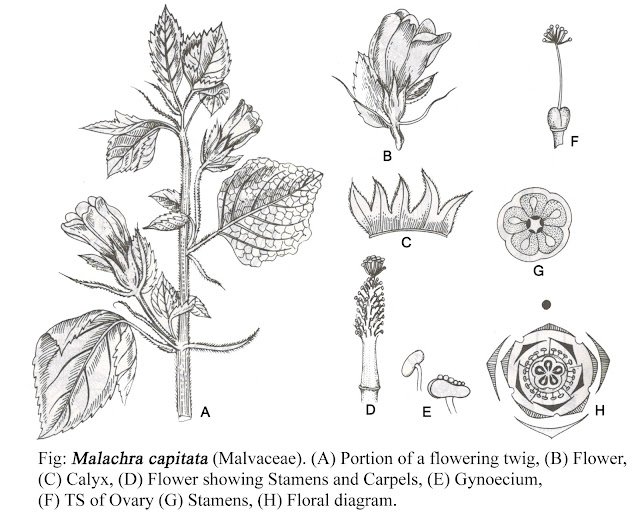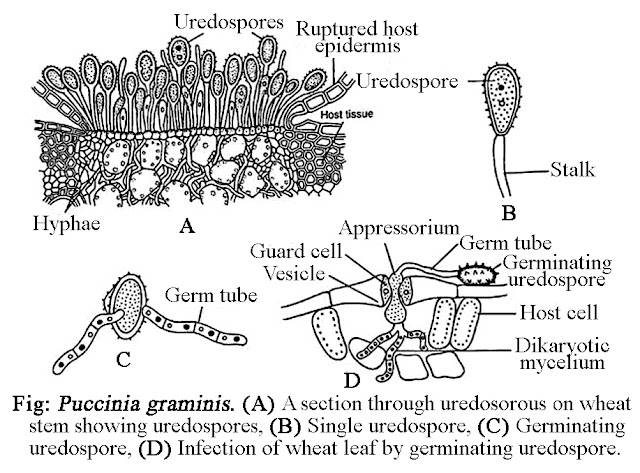MALVACEAE
1. SYSTEMATIC
POSITION:
Bentham
& Hooker
Division: Phanerogames (Seed Plants)
Class:
Dicotyledones
Sub-class: Polypetalae
Series:
Thalamiflorae
Order:
Malvales
Family:
Malvaceae
2. MORPHOLOGICAL
CHARACTERS:
Habit
– Usually herbs, shrubs or trees, often mucilaginous.
Leaves
– Alternate, simple, stipules deciduous.
Inflorescence
– Solitary axillary or terminal.
Flower
– Bisexual, pentamerous, complete, actinomorphic, valvate to twisted,
hypogynous, often showy.
Calyx
– Sepals 5, united, valvate.
Corolla
– Petals 5, adnate below at staminal tube, twisted.
Androecium
– Stamens many, united into a tube/bundle-monoadelphous, epipetalous,
anther monothecous, reniform, extrose, pollen spinose.
Gynoecium
– Carpels 5 to many, syncarpous, ovary superior, multilocular, with one or
more ovules in each locule, style 1 passing through the stamina tube, and
divided at the top into as many branches as there are carpels, each branches
ending into a stigma, placentation axile.
Fruit
– Capsule or schizocarpic.
3. FLORAL
FORMULA: ⊕⚥K(3-5), C5, Aα, G(5-10)
4. COMPARATIVE SYSTEMATIC POSITION AND
AFFINITIES:
Engler & Prantl
put this family together with Tiliaceae, Bombaceae, and Sterculiaceae in the
order Malvales. Hutchinson placed this family in the monotypic order Malvales.
Bentham & Hooker kept Malvaceae along with the Tiliaceae and Sterculiaceae
in the order Malvales.
Malvaceae
is related to Tiliaceae and Sterculaceae in having mucilaginous sap, simple
alternate and stipulate leaves. According to Bentham & Hooker, it differs
from them by having monothecous anthers, monodelphous conditions and presence
of involucres or epicalyx.
5. ECONOMIC IMPORTANCE:
1. The seed hairs of many species like Gossypium arboretum, G. hirsutum, G.
Herbaceum, etc. form the cotton
of commerce.
2. Fibres are obtained from Abutilon spp., Sida rhomboida, Urena lobata,
etc.
3. The leavea of Hibiscus cannabinus serves as the source
of edible greens.
4. The seeds of Ablemoschus moschatus yield aromatic oil.
5. The fruits of A. esculantus is used as vegetable.
6. The plants with ornamental values
are – Hibiscus rosa sinensis and H. mutabilis.
*************




Comments
Post a Comment